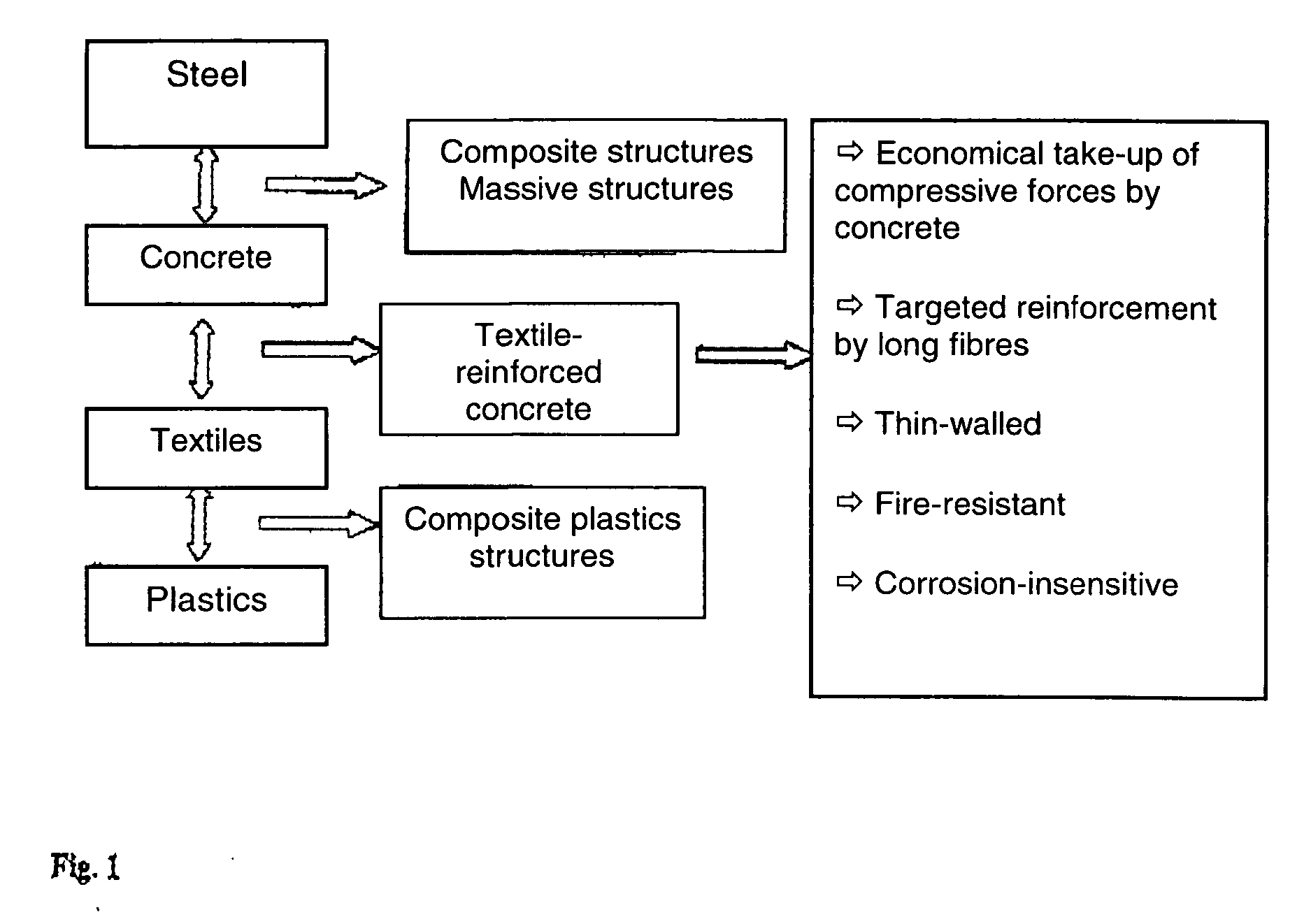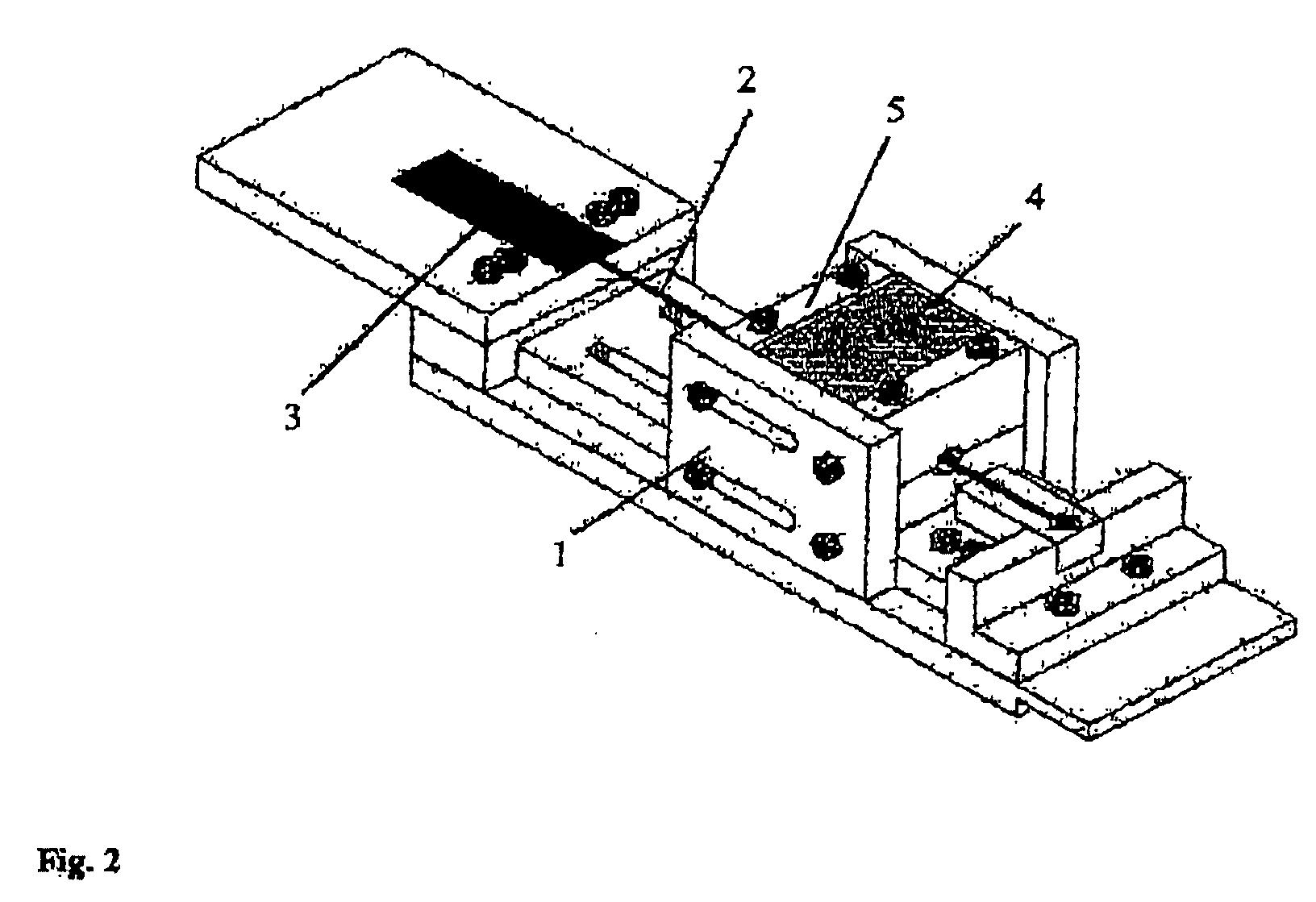Preparations for use in concrete
a technology for concrete and short fibers, applied in the field of preparations for use in concrete, can solve the problems of limited application area of short fiber reinforced concrete, lack of production processes, and limited stretching during industrial production, and achieve the effect of improving the properties of fibrous products
- Summary
- Abstract
- Description
- Claims
- Application Information
AI Technical Summary
Benefits of technology
Problems solved by technology
Method used
Image
Examples
example 1
[0073] The aqueous phase (W) and the monomer phase (M) were passed via a measurement and control apparatus into the first reactor of a polymerization cascade made from 7 identical reactors, each with a volume of 50 liters, in a permanently constant ratio by weight, along with the activator phase (A). The average residence time per tank was 25 minutes. The reactors correspond to those described in DE-A 2 650 714 (data in parts by wt. per 100 g parts by wt. of monomers used).
[0074] (M)=Monomer Phase:
chloroprene100.0parts by wt.n-dodecylmercaptan0.11parts by wt.phenothiazine0.005parts by wt.
[0075] (W)=Aqueous Phase:
deionized water115.0parts by wt.sodium salt of disproportionated abietic acid2.6parts by wt.potassium hydroxide1.0parts by wt.
[0076] (A)=Activator Phase:
1% aqueous formamidinesulfinic acid solution0.05parts by wt.potassium persulfate0.05parts by wt.Na salt of anthraquinone-2-sulfonic acid0.005parts by wt.
[0077] Reaction started up readily at an internal temperature of...
example 2
[0081] The same procedure was used as in Example 1, but the concentration of regulator in the monomer phase was reduced to 0.03 wt. %.
[0082] The solids content was 33 wt. %, the gel content was 1.2 wt. % and the pH was 12.9.
[0083] After steam distillation, the dispersion was conditioned in an insulated storage tank for three days, at a temperature of 80° C., wherein the temperature was post-regulated, if required, by an input of heat and the increase in gel content in the latex was measured, using samples.
[0084] This dispersion was also creamed as described in Example 1.
[0085] B) Substances Used:
PolychloropreneGel: 0%,dispersion fromSolids: 58%,Example 1pH: 12.9PolychloropreneGel: 16%,dispersion fromSolids: 56%,Example 2pH: 12.7Silicon dioxideDISPERCOLLBayer MaterialSolids: 50%,dispersionS 5005Science AGPart. size: 50 nmSurf. area: 50m2 / gAcrylatePLEXTOLPolymer LatexSolids: 60%,dispersionE 220GmbH & Co. KGPart. size: 630nm,pH: 2.2AntioxidantRHENOFITRhein Chemie50% solids inDDA ...
PUM
| Property | Measurement | Unit |
|---|---|---|
| Fraction | aaaaa | aaaaa |
| Particle size | aaaaa | aaaaa |
| Particle size | aaaaa | aaaaa |
Abstract
Description
Claims
Application Information
 Login to View More
Login to View More - R&D
- Intellectual Property
- Life Sciences
- Materials
- Tech Scout
- Unparalleled Data Quality
- Higher Quality Content
- 60% Fewer Hallucinations
Browse by: Latest US Patents, China's latest patents, Technical Efficacy Thesaurus, Application Domain, Technology Topic, Popular Technical Reports.
© 2025 PatSnap. All rights reserved.Legal|Privacy policy|Modern Slavery Act Transparency Statement|Sitemap|About US| Contact US: help@patsnap.com



